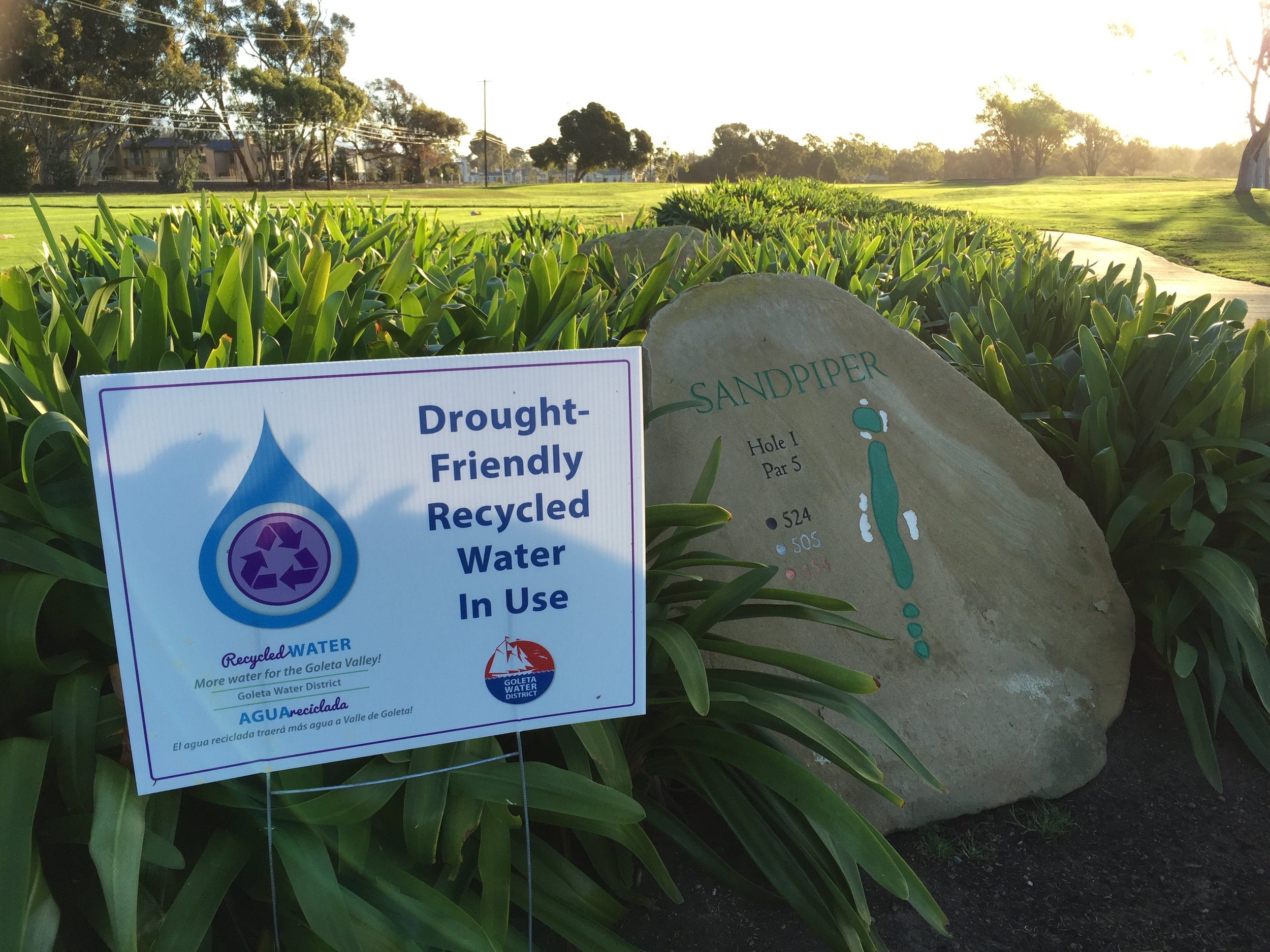June 24th, 2025 • By Cade Schafer
5 Minute Read
The Greener Golf Index: A Comprehensive Framework For Measuring Golf’s Impact
The golf industry has long suffered from the notion that golf courses are a negative to the environment and places of exclusion within their communities. These perceptions are not completely unjustified. In the decades following World War II, the rapid expansion of golf in North America became increasingly defined by the pursuit of lush, manicured landscapes, a pursuit that demanded significant water use, extensive earthmoving, and heavy applications of fertilizers and pesticides. These practices placed significant strain on local water resources, disrupted native ecosystems, and introduced toxic chemicals into surrounding environments posing significant risks to the environment and human health.
Amid growing environmental pressures, rising maintenance costs, regulatory pressure, and shifting public expectations, golf is beginning to chart a more responsible path forward. It is safe to say that the golf industry is currently in a state of transition, focused on reducing resource consumption, enhancing ecological function, and demonstrating social value beyond the game itself. From the dramatic renovation of Pinehurst No. 2, which reduced irrigated turf by 50% while restoring natural sandy areas, to the National Links Trust’s ambitious effort to revitalize three historic municipal courses in Washington, D.C. as inclusive, environmentally conscious community hubs, the push to grow the game more responsibly is gaining momentum across every level of the industry.
But even as more courses begin to embrace sustainability, one challenge continues to hold the movement back: the industry’s inability to effectively measure and communicate the full impact of its environmental and social initiatives. Part of the problem is that there is no shared understanding of what a sustainable, inclusive, and high-performing golf course actually looks like, and no consistent framework to define goals, evaluate impact, or measure progress across all areas of course performance. This absence of structure not only limits internal accountability, but it also weakens the golf industry’s ability to demonstrate the true value it can offer when managed thoughtfully. Without standardized methods for assessment, many courses and the industry as a whole struggle to:
Benchmark sustainability efforts and set meaningful performance goals
Communicate environmental and social impacts to communities, municipalities, or boards
Evaluate pre- and post-renovation performance using objective metrics
Compare facilities across regions, course types, or other land-use alternatives
Track long-term progress in a consistent, year-over-year way
Advocate for the value of golf in public policy, land planning, and funding conversations
Align behind a common definition of what sustainable golf truly looks like
The Greener Golf Index
In response to this challenge, Greener Golf has developed the Greener Golf Index (GGI), a comprehensive, data-driven evaluation tool that establishes a widely applicable framework for measuring golf course performance through 18 indicators spanning four categories: Economic, Environmental, Social/Cultural, and Golf Experience. The GGI is designed to identify where a facility stands today and help guide its evolution toward a more sustainable, community-oriented, and resilient future.
Built to do more than just measure performance, the GGI also supports better decision-making, clearer communication of value, and long-term improvement. Its core objectives are to:
Establish Benchmarks: Create industry thresholds and performance averages where none currently exist.
Support Internal and External Assessment: Give superintendents, operators, and leadership the data they need to assess their own progress, while also offering transparency to communities, regulators, and stakeholders.
Guide Renovations and Planning: Help facilities evaluate their baseline conditions and measure the true impact of capital improvements or operational changes.
Promote Meaningful Comparisons: Enable golf courses to be evaluated both among one another and alongside other land uses, highlighting the role that well-managed courses can play in ecological and community health.
Foster a Culture of Accountability and Growth: Shift the sustainability conversation from vague aspirations to specific, measurable outcomes.
Structure of the GGI
The Greener Golf Index is built on the belief that sustainability in golf is multidimensional, not limited to environmental performance, but deeply connected to economics, community, and the integrity of the game itself. To reflect this complexity, the GGI is structured around 18 indicators within four core categories:
Economic: Measures the financial sustainability and efficiency of golf operations, including revenue, expenses, labor dynamics, and the value of natural capital.
Environmental: Evaluates a course’s interaction with the natural world, how it manages water, chemical inputs, habitat biodiversity, energy use, and waste streams.
Social/Cultural: Assesses how the course supports its surrounding community, promotes equity and accessibility, and contributes to education, health, and civic well-being.
Golf Experience: Evaluates the quality, integrity, and character of the golfing experience. This category focuses on course design, conditions, and maintenance practices, as well as the spirit and culture of the game. It acknowledges that a sustainable golf course must not only perform well environmentally and socially, but also provide a compelling, enjoyable, and values-driven experience for its players. This category ensures that sustainability and playability are not seen as competing priorities, but rather as complementary goals that reinforce each one another.
The Four Pillars of the Greener Golf Index
These categories were carefully selected to promote a holistic and systems-based understanding of a golf course’s overall impact. By evaluating a course across these four lenses, the GGI encourages golf facilities to look beyond isolated improvements and instead consider how operations, design, culture, and stewardship intersect to shape long-term sustainability.
This structure also ensures that golf courses are not judged solely on one dimension, such as their environmental footprint, but are assessed on their true overall impact. Too often, golf courses are criticized based on perceptions of environmental harm without consideration of their potential benefits or challenges in other areas. The GGI addresses this imbalance by offering a more equitable and complete evaluation, recognizing that a course might have room for improvement in one category while excelling in others, such as creating jobs, offering inclusive programming, or protecting public green space. In doing so, the GGI enables a more nuanced and constructive conversation about what sustainable golf truly means.
The 18 Performance Indicators of the Greener Golf Index
The GGI In Practice
Each of the 18 indicators within the Greener Golf Index is built on a set of specific metrics. For every indicator, data is gathered from a range of sources including course-provided records, aerial imagery, maintenance logs, national datasets, field-based observations, and interviews with staff and community members. This diversity and depth of data allow us to tailor evaluations to a facility’s unique context while maintaining a standardized framework that enables meaningful comparisons across course types, locations, and budgets.
Our process includes an initial benchmarking evaluation to establish baseline conditions, followed by future assessments that help track change, document improvements, and guide long-term decision-making. Between these assessments, Greener Golf works with each facility to translate assessment findings into targeted interventions, best practices, and opportunities for improvement across all indicators. This approach ensures that the GGI is not just a static snapshot, but a dynamic tool that supports action, equipping courses with the insights, tools, and direction needed to make meaningful progress.
As the GGI continues to be applied across a growing number of facilities, the data we collect will also contribute to broader industry insights, helping establish benchmarks and performance ranges that courses can use to better understand where they stand in relation to their peers.
Shaping the Future of Golf
At a time when human activity is placing unprecedented pressure on our planet, threatening biodiversity, degrading ecosystems, and endangering public health, every industry must step forward with purpose. Golf, long criticized for its environmental footprint, has a unique opportunity to lead. By transforming courses into regenerative landscapes, community assets, and models of sustainable design, the game can redefine its perception and its future.
The Greener Golf Index is built to help guide this transformation. It provides the structure, clarity, and accountability needed to move beyond fragmented efforts and toward a unified, measurable vision of sustainability on golf courses. This is a pivotal moment for golf, not just to participate in solving today’s environmental and social challenges, but to set a precedent that other industries can follow.
As we continue to refine and apply the GGI, we are inviting forward-thinking courses, superintendents and partners to join us. Whether you manage a facility, are overseeing a renovation, or are simply passionate about the future of the game, the GGI offers a way to move forward with confidence, grounded in data, driven by purpose, and connected to a broader movement for change.
To learn more about the Greener Golf Index or explore how the GGI could support your work, contact us at info@greener.golf



